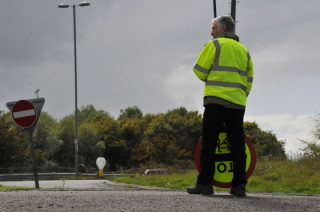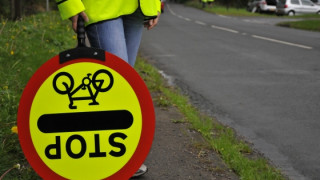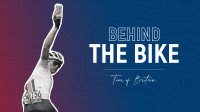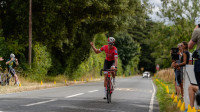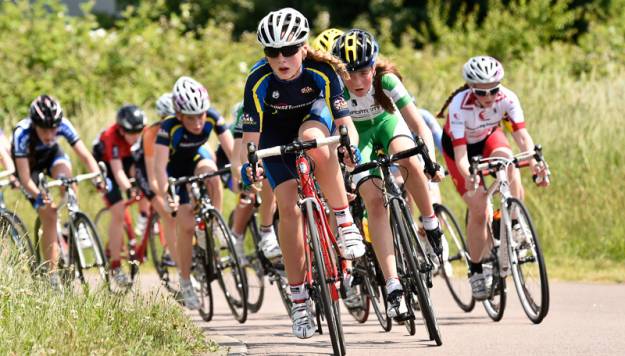21 September 2011
Feature: Eddie Allen
Stop Sign Start of Something Big in Road Racing
Above: The power is in the sign. The new Stop-Event signs give marshals the power to stop and hold traffic for short durations.
11th September 2011; Little Milton, Oxfordshire. As the 2011 Tour of Britain got underway in Peebles, 400 miles south in the sleepy Oxfordshire village of Little Milton, riders, marshals and other volunteers were getting ready for what at first glance appeared to be a fairly innocuous 2nd/3rd/4th cat road race.
However, as Commissaire Patrick Kavanagh stated in his rider briefing, the High Wycombe CC annual road race was, in his opinion, the most important road race taking place on that day. Patrick had good reason for the assertion, as the race was the culmination of a groundbreaking pilot scheme, a test bed for what British Cycling's Regional Event Officer Mark Doel described as "perhaps the most significant breakthrough in road race marshaling in the last 40 years."
I met Mark a few hours prior to the race, as he was unloading his car and preparing to mark out the route. As we chatted, Mark produced a boot-full of curiously familiar hand held ‘Stop-Event' signs, looking remarkably like school crossing patrol signs, known by school runners, peak hour commuters (and schoolchildren) the length and breadth of the country.
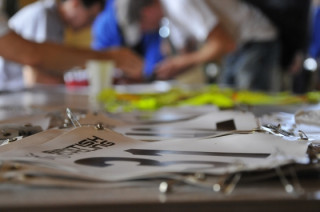
As we unloaded the car, Mark explained that the High Wycombe event was the final race in a series of pilot events devised to measure the effectiveness of these new hand held signs, used in conjunction with new traffic control signage and a tailored package of marshal training. The outcome of the pilot is to gather evidence of its effectiveness, with the future aim of gaining the approval of local highway authorities and police forces countrywide. The new Stop-Event sign, developed in conjunction with and approved by the DfT, is hoped to make staging road races easier, more professional and, most importantly of all, safer for participants and road users. But perhaps the most important point is that the signs have the legal power to stop and hold traffic for short durations.
Mark and I, together with a trainee marshal from High Wycombe CC, left the event HQ and made our way around the 24km route, positioning new, additional Traffic Control Ahead signage, giving motorists advance warning of the location of the club's newly trained, handheld‘Stop-Event' sign equipped marshals. Each marshal involved in the pilot attended a special British Cycling training course, consisting of theoretical and practical exercises designed to inform and empower their marshaling, focussing on the legal powers of the sign, dynamic risk assessment, dealing with conflict and practical coaching on how to use the sign in real world scenarios.
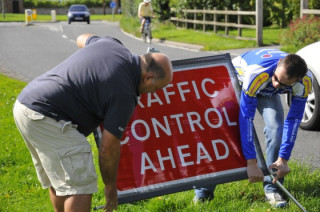
Soon it was 1pm and riders started to descend upon Little Milton village hall, checking bikes, signing on and fuelling up for the 100km race. Marshals too were preparing, each issued with a briefing card detailing exactly where they were to be stationed, high viz jacket and that all important Stop - Event sign.
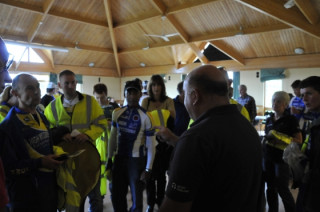
Fast forward an hour and as the race rolled out of the village hall, I rolled out in the opposite direction to watch the newly trained and equipped marshals in action at each of the four control points on the route. Come the race and each newly trained marshal knew their remit. I made my way to one of the marshal points, a roundabout with 3 points to stop and hold traffic. With the support of NEG motos, marshals walked confidently into the road and, for the briefest time possible, held the traffic. The roundabout was sterile of traffic, and with the motorists reacting positively to the marshals the bunch streamed through unimpeded.
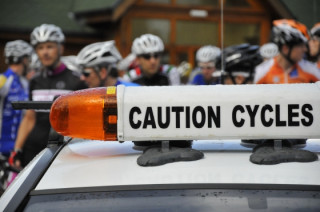
The effect of the signage, clothing and marshal training was profound. No driver questioned the slight hold-up to their journey. As positively and confidently as they had began, the marshals thanked drivers with a gesture and a smile, stood back and waved the traffic through. No conflict, no dramas.
The scene was repeated in each of the three other locations, the marshals relishing the empowerment that the new equipment brought with it, drivers acceptant (perhaps responding to the hardwired visual language of the sign?) and most importantly of all, racers enjoying safe, seamless competition on the Highway.
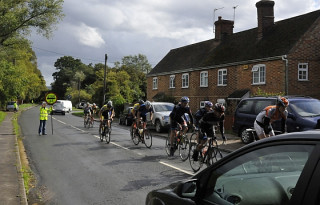
It all seemed too good to be true, so I decided to head back to the event HQ and wait for marshals and riders to return to gauge their reaction to the day's pilot event. Experienced race organiser and marshal Brian Murphy of High Wycombe CC commented "The training was good because it gave you experience of actually using the sign, stepping in front of a car in the car park - so it didn't come as a rude awakening when you did it for real". Brian continued, "When I marshalled in the past I just had a red flag, quite timidly waving the red flag hoping that the traffic would do something! Now, when you step out with the sign, you feel quite confident about it."
I spoke to husband and wife team Jane and James Hunt, both newcomers to marshalling, to gauge their experiences armed with the new training and equipment. Jane commented, "It's given us confidence because it's our first time marshalling - it gave us the confidence to step out, be authoritative and deal with any difficulties that might arise ".
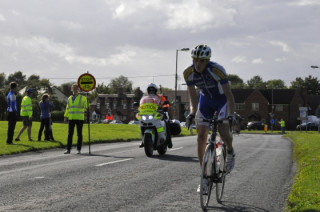
"The hands on practice really helped that," added Jane's husband James, who worked together with his wife to control the roundabout at Stadhampton. "[The training] told us how to handle the sign, how to stand and engage road users... ...The similarity of [the sign] with the school crossing lollipop made it easier for motorists - someone stepping out into traffic and stopping and holding them. "
James was positive too about the response he had from other road users. "They could see the cyclists coming, they could relate to the sign and I was greeting with a smile. It was good, very positive."
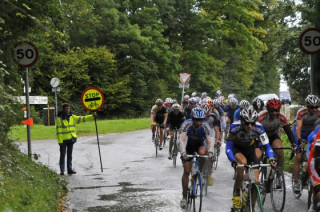
However, it was the rider experience that was perhaps the most pertinent, so I caught up with a mud spattered Karla Boddy from High Wycombe CC, who'd just completed the 100km race in wet, blustery conditions. "The new marshalling system worked really well. When coming to junctions and turning left, you know that the cars will be actually stopped. Today on this course you knew that there was little or no risk of having an altercation with a car. Yeah, generally we felt a lot safer."
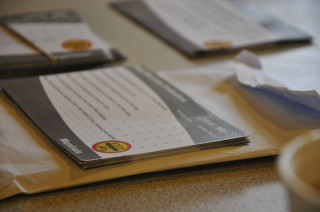
And so the riders, marshals, suppliers of tea and cake and other volunteers began to pack up and go home, another successful annual RR behind them, looking forward with optimism to the next event.
The High Wycombe event was one of the last in a series of pilots that took place throughout 2011. The pilot scheme will be expanded to other regions, helping to build a body of evidence that will be collated into a review, which, subject to ratification by highways bodies and police forces, will hopefully in the not too distant future form the basis of national implementation of the Stop-Event system.
So perhaps in a few years time, when you see the friendly sight of a hand held Stop-Event sign, similar to that of a school crossing patrol, on the road ahead it won't be a school crossing - it'll be a bike race coming through...
